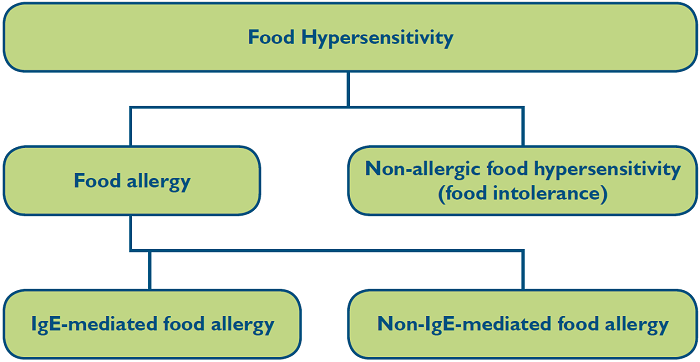Allergic diseases, such as atopic eczema and asthma, are on the increase in the developed world through a combination of genetic, environmental and dietary factors.7 Hypotheses such as the 'hygiene hypothesis' suggest that modern improvements in infection control and high levels of domestic cleanliness have led to an under-stimulation of the developing immune system with resultant over-activity towards non-harmful substances. Environmental pollutants, including domestic cleaning products and air pollution may also play their part in the development or exacerbation of disease. Similarly, diet has been shown to be a major contributory factor and some dietary allergies, for instance towards nuts or eggs, are also on the increase.
Use of dietary measures to prevent allergic disease, particularly with regards the maternal diet during pregnancy, is still an under-researched area with little conclusive evidence. However, the management of dietary allergies through avoidance of allergens is increasingly commonplace and specialist infant formulae can play an important role. Avoidance of known allergens with a slow introduction to potential allergenic foods is current best practice and the pharmacy team are well placed to advise and support families at risk of allergy.
It is important for healthcare professionals to be able to advise on the differences between food allergy and food intolerance. The World Allergy Organization published a guidance document in 2004 which clarifies the nomenclature used in allergic disease.8 This categorises all adverse reactions to food as 'food hypersensitivities' and further sub-divides them into food allergies, which involve the immune system (either IgE- or non-IgE-mediated), and food intolerances which do not. (see Figure 1).
Figure 1: Food hypersensitivity9

IgE-mediated allergy (or antibody-mediated) involves the production of immunoglobulin E, an antibody that degranulates mast cells causing the release of histamine, prostaglandins and other inflammatory factors. Reactions are termed 'immediate' and usually occur within twenty minutes of consuming the allergen, although it can take up to two hours.
In comparison, non-IgE-mediated (or cell-mediated) allergy is less understood. Production of IgE does not occur (although IgG may be involved) and instead immune cells, such as Helper T cells and macrophages, mediate the response. Reactions are delayed, typically taking two to three days following exposure for symptoms to occur. This makes it more difficult to diagnose.
Food intolerances, for instance to lactose, do not involve the immune system but are caused by a physiological factor such as an enzyme deficiency, in this case lactase. The first signs of a food intolerance are usually gastrointestinal symptoms such as bloating and diarrhoea.
